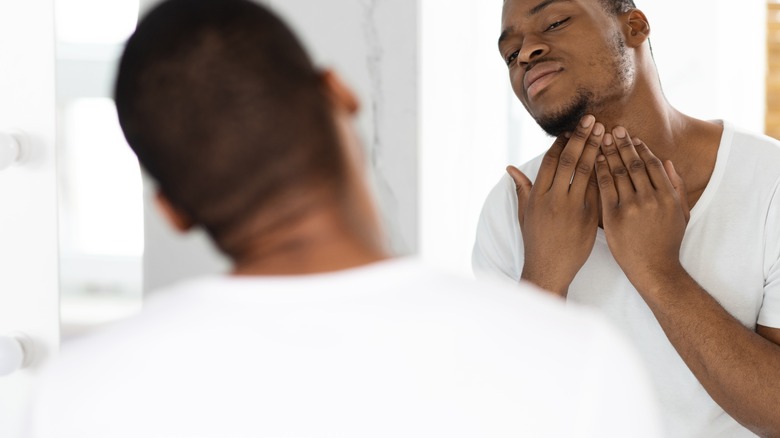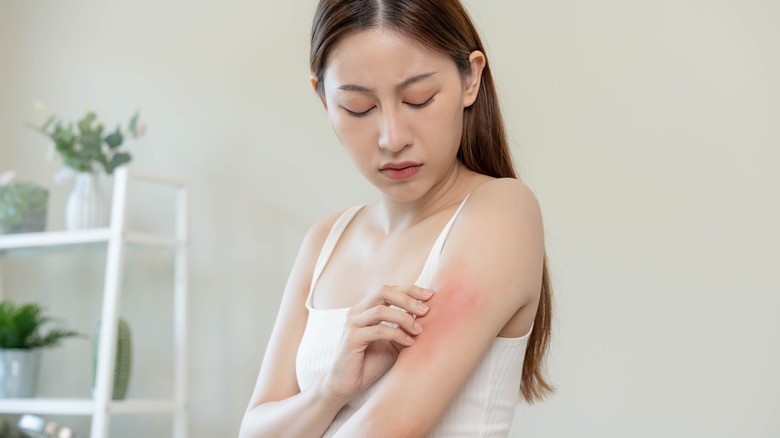Will An Ingrown Hair Go Away On Its Own?
An ingrown hair occurs when a hair becomes trapped beneath the skin's surface, causing the hair to grow sideways or curl back into the skin, per the Cleveland Clinic. Ingrown hairs can occur anywhere on the body where hair grows, including the face, neck, chest, back, and legs. They can be unsightly and sometimes painful and can cause a raised, uncomfortable bump.
Ingrown hairs can affect anyone, but they are most commonly seen in individuals with curly or coarse hair, as these hair types are more likely to become trapped in the follicle, says WebMD. High levels of sex hormones can cause more hairs on the body, increasing the likelihood of ingrown hairs. Waxing, tweezing, or shaving can also cause the hair to become trapped beneath the skin's surface.
While ingrown hairs can be uncomfortable and unsightly, they are generally manageable and can be treated with various at-home remedies and medical interventions.
Can an ingrown hair go away on its own?
An ingrown hair may cause discomfort and irritation, but it will typically go away on its own over time without treatment, says the Cleveland Clinic. Usually, when an ingrown hair occurs, it will typically release out of the skin. This process can take up to two weeks, depending on the severity of the ingrown hair. During this time, it is important to avoid picking at or scratching the affected area, as this can lead to further irritation and potentially cause infection.
In some cases, the area may become infected, which can lead to the formation of a pus-filled pimple or boil. If the ingrown hair is causing significant pain or symptoms appear to be getting worse, it is best to seek medical attention.
Fortunately, several treatment options are available to help reduce inflammation, prevent infection, and encourage the hair to come to the surface.
How can an ingrown hair be treated?
Treatment options for ingrown hairs vary. If the ingrown hair is causing discomfort, several at-home remedies can help. Applying a warm compress to the affected area for 10-15 minutes can help open the pores and encourage the hair to come to the surface, advises the Cleveland Clinic. Exfoliating the area gently with a soft-bristled brush or washcloth can also help to remove dead skin cells and free up the hair. If the ingrown hair is causing significant inflammation or appears to be infected, your doctor may recommend a steroid cream. Your doctor may also recommend antibiotics or a topical ointment to treat the infection and help the hair to come to the surface.
Laser hair removal may be a more permanent solution if you are prone to ingrown hairs or if the ingrown hair appears to be getting worse. This procedure works by targeting the hair follicle's deeper layers and destroying it with a laser, slowing down the regrowth of the hair, per the Mayo Clinic.



